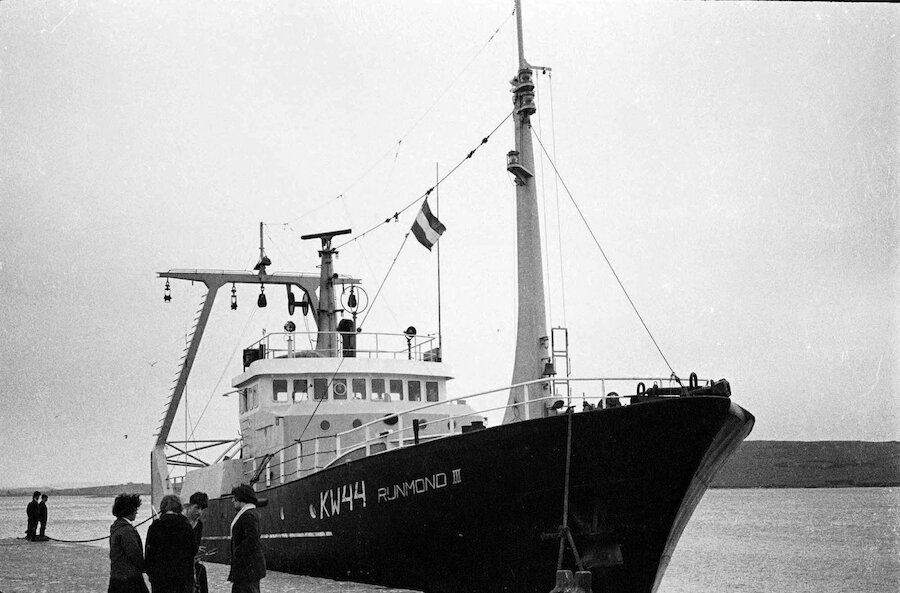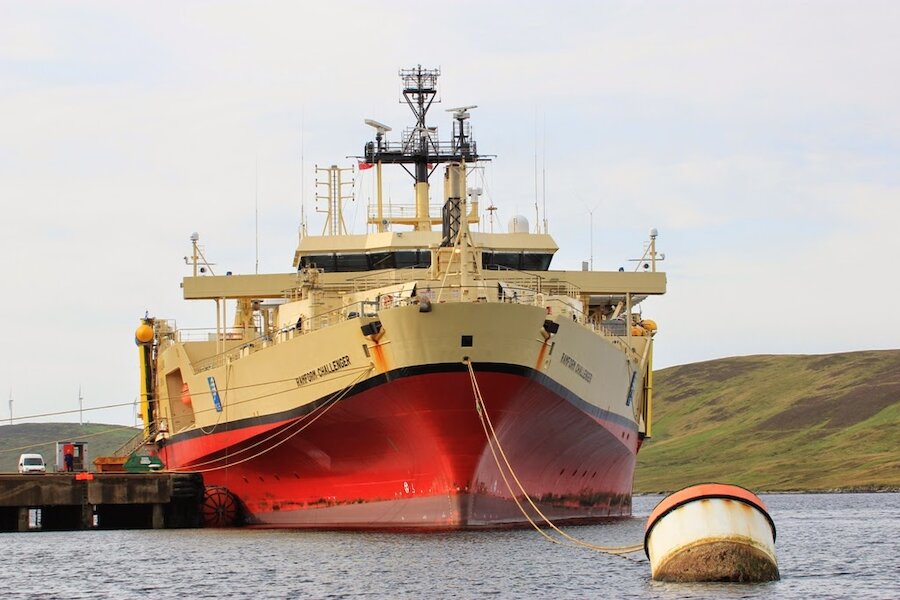1964: The Dutch seismic survey ship Runmond III
The Shetland Timesof Friday 3 July 1964 reports that vessels, Cedar Creekfrom the USA and Runmond III, from Holland, surveying for Western Geophysical on behalf of a British ‘petroleum’ company, had been stormbound in Lerwick the previous weekend (27-28 June). They later headed for Norway.
This year also marks the 50th anniversary of the UK Government’s passing of the Continental Shelf Act, the First Round of Licensing of blocks for exploration and the first well drilled.
The first wells were drilled east of Shetland in 1971 and a first well to the west in 1972. The impetus for a major role for Lerwick Harbour came in the 1970s with the development of East Shetland Basin fields, including Brent and Ninian.
Lerwick Port Authority Harbourmaster, Captain Calum Grains, explained: “Oil-related vessels weren’t recorded separately from general ships through the 1960s. Only with increasing activity in the ‘70s were they categorised and counted by their types.
“Research by our staff and recollections from the then shipping agent at Hay & Co led to these two vessels which are believed to be the first oil-related ships into Lerwick.
“By way of comparison, Cedar Creek, at 151 gross tonnes, is around the size of the port’s current vessel, Kebister. The then fairly new stern trawler, Runmond III, at 241 gross tonnes, is comparable to a modern local white-fish vessel. Seismic ships now calling at Lerwick can be significantly larger - some Ramform vessels weigh in at over 10,000 tonnes.”
Since oil vessels were first categorised in the port’s records in the 1970s, around 40,000 have called at Lerwick which developed as a leading support centre.
Captain Grains added: “No-one could have guessed then what these two vessels heralded for Shetland in oil and gas activity and the impact on the economy and community over the next five decades. Or that, 50 years on, development would still be continuing onshore and offshore, with years of production to come – and that we would still be investing in the port to make the most of more new opportunities.”


